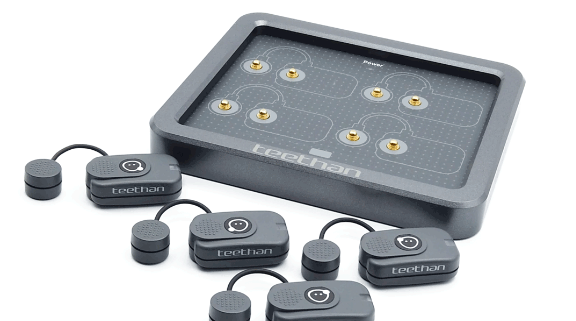DIAGNOSIS WITH ELECTROMYOGRAPHY
To always offer our patients the best treatments and the most effective technologies, our Clinic has equipped itself with electromyography. This is a modern medical technology capable of measuring the balance of dental occlusion in a simple, fast, and non-invasive way. Through this method, we perform two tests, lasting a few seconds each, to measure muscle activity in maximum intercuspation. Once the information is acquired, the technology processes the values and generates a clear report that is easy to interpret. Through a graphical summary, it becomes easier for the patient to understand the occlusal condition of their oral cavity and the necessary interventions to improve it.
HOW ELECTROMYOGRAPHY WORKS
This modern diagnostic method allows, in the dental field, to evaluate the activity of the anterior temporal and masseter masticatory muscles in contraction. The two measurements, performed while the patient clenches their teeth, specifically are:
- the calibration test. Two cotton rolls are placed between the upper and lower dental arches;
- the detection of occlusal plane parameters.
After the tests are completed, a scientifically validated report is available which indicates POC – percentage overlap coefficient, BAR – barycenter, TORS – torsion, IMPACT – muscle work, ASIM – asymmetry, SMI – global symmetry index. From the combination of these data, the state of the neuromuscular balance of the muscles involved in chewing when the teeth touch is revealed.
Easy and painless
As mentioned, it is a non-invasive or harmful health examination, which does not cause pain or emit radiation. The patient is seated with their back in an upright position, and four small wireless probes are applied to the skin of the face and neck. A computer instantly processes the electrical signals sent by the probes during chewing activity.
FIELDS OF APPLICATION
In our Dental Clinic, we resort to electromyography for:
- developing an orthodontic treatment plan;
- establishing a prosthodontic rehabilitation therapy;
- evaluating the various phases of orthodontic or prosthetic treatment;
- identifying temporomandibular disorders (TMD);
- adjusting devices like bite splints.



